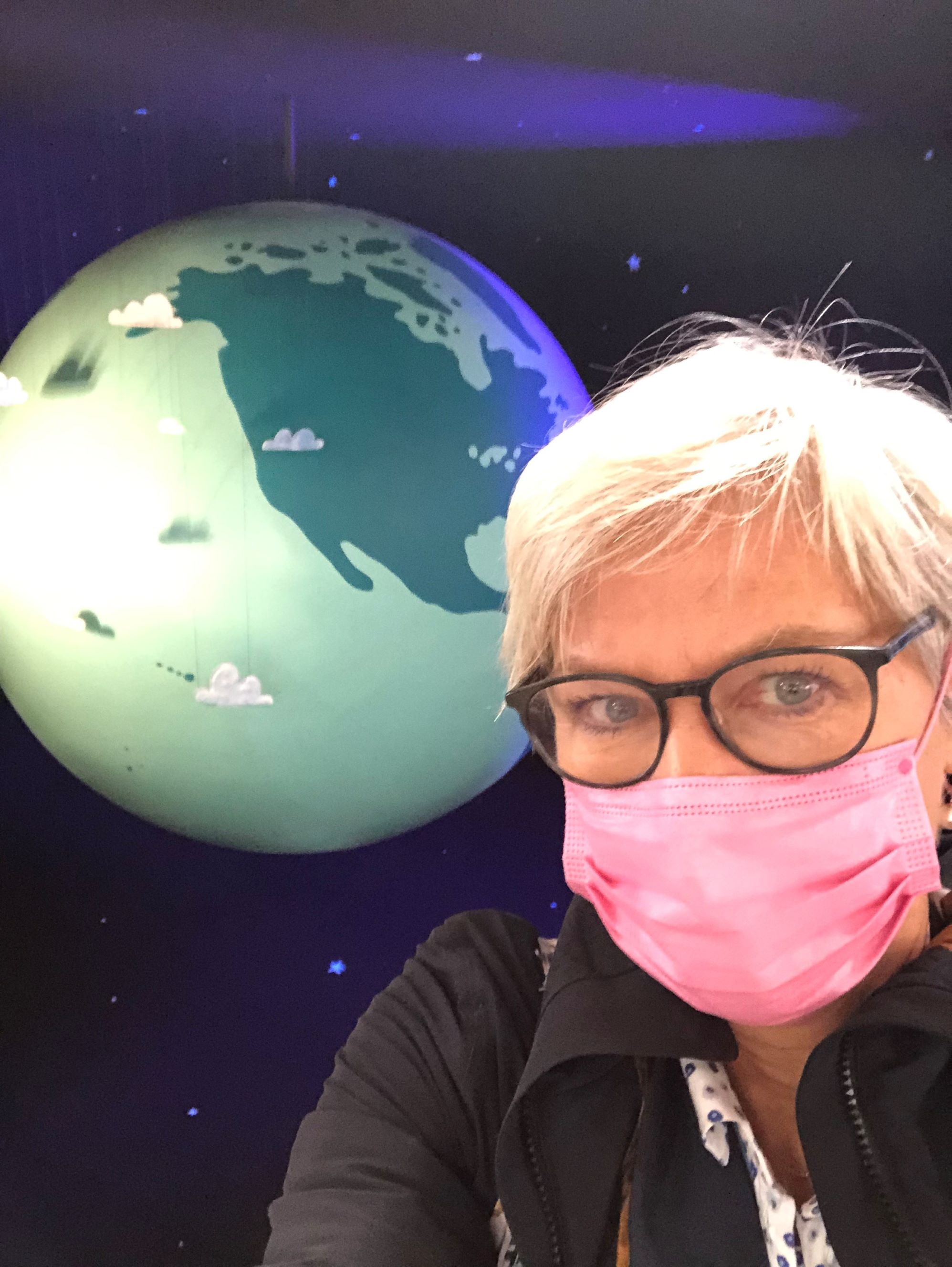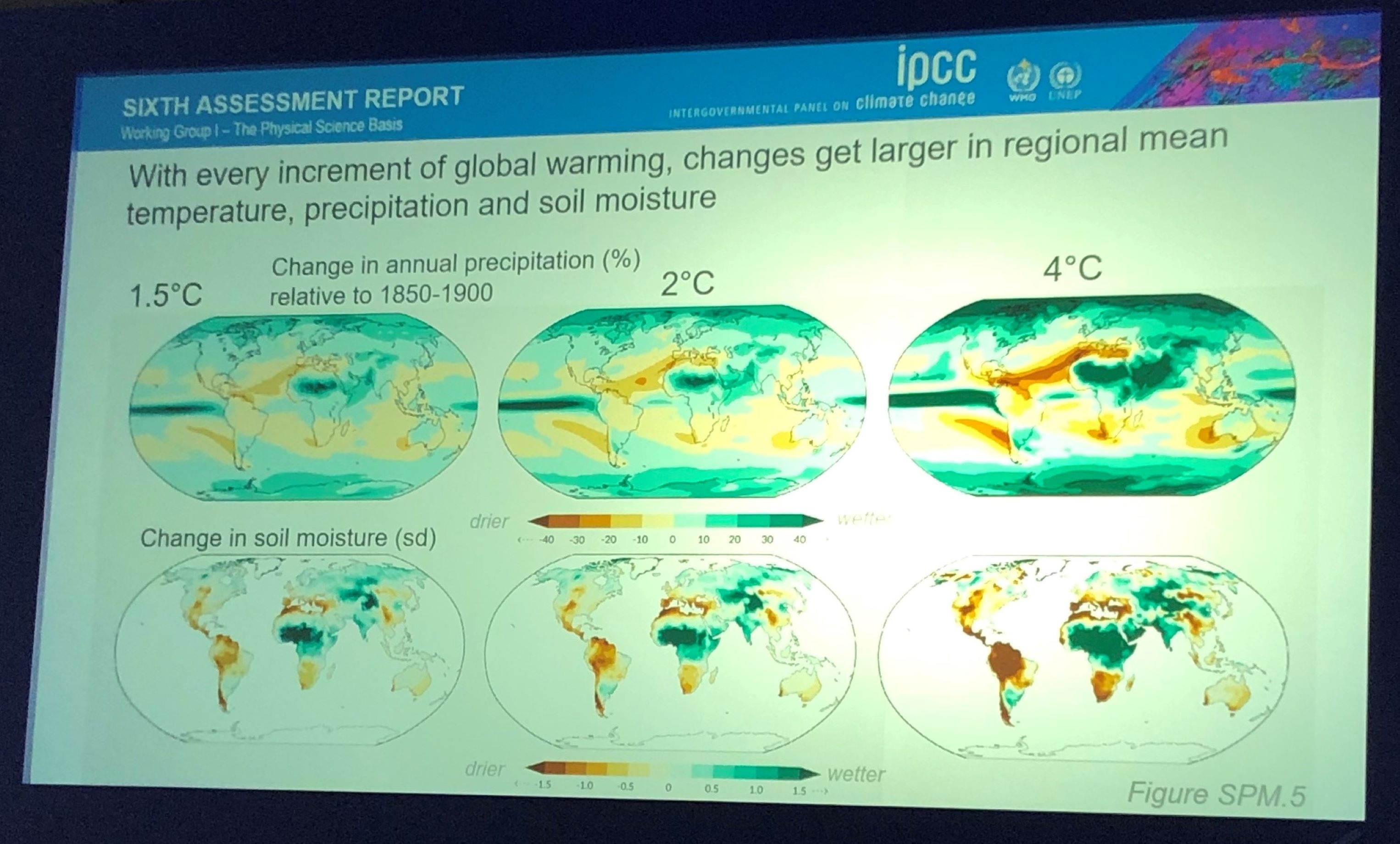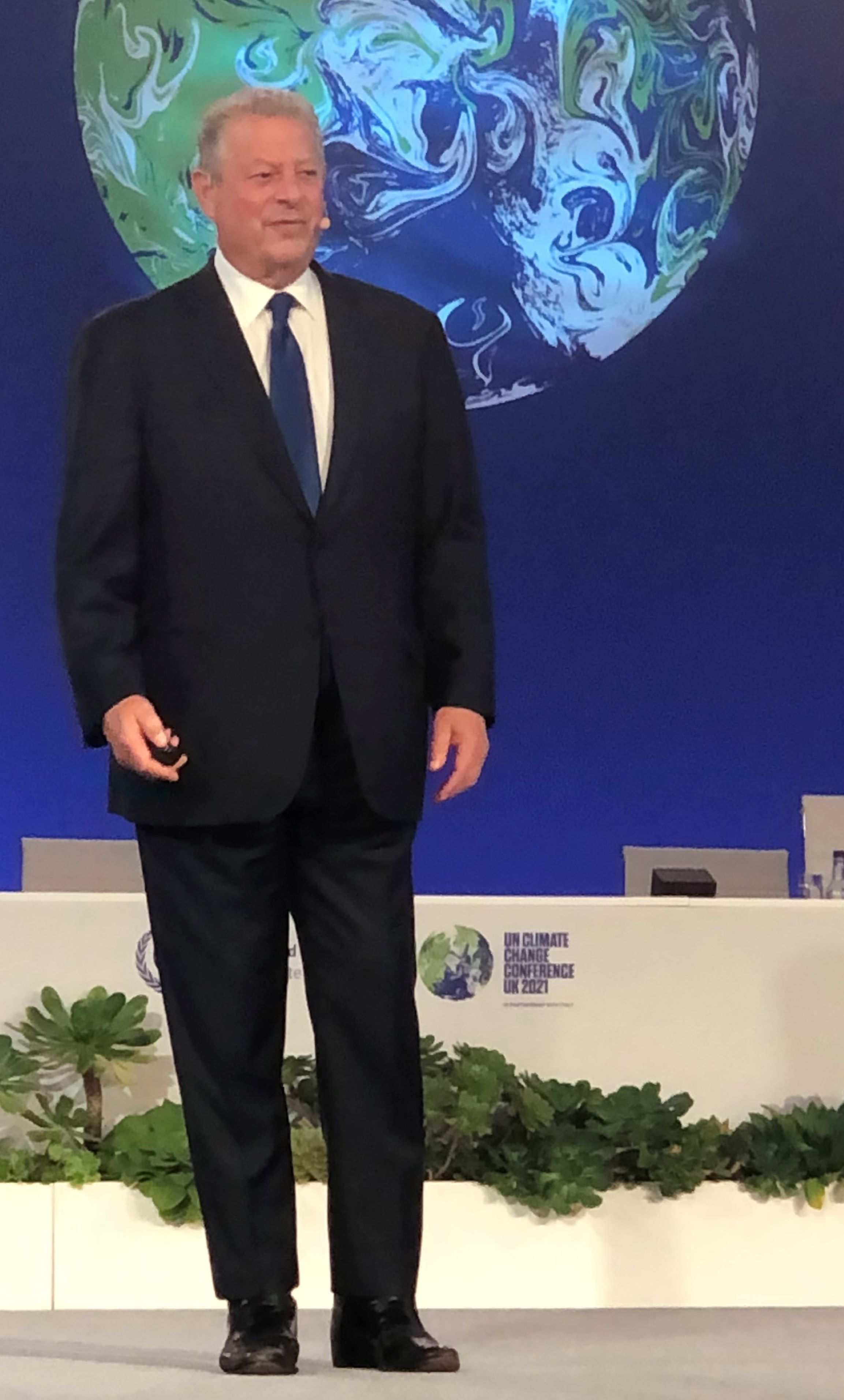Resource protection is climate protection
Impressions from the UN Climate Change Conference in Glasgow from the perspective of material and resource science



The 26th UN Climate Change Conference in Glasgow from October 31 to November 12, 2021, started with high expectations: Building on the 2015 Paris Agreement, action was to be achieved to limit global warming to below 1.5°C. The most important negotiation points among the nations concerned, among other things, the financing of climate protection measures, in particular thereby support for developing countries, the advancement of measures for adaptation to the consequences of climate change as well as uniform regulations for the global CO2 market.
Prof. Dr. Anke Weidenkaff, director of the Fraunhofer Research Institution for Materials Recycling and Resource Strategies IWKS and a member of the German Advisory Council on Global Change (WBGU), was part of the German delegation in Glasgow. She was in close contact with the various stakeholders at the conference, including WBGU member Prof. Dr. Hans-Otto Pörtner, co-chair of the IPCC Working Group on Climate Change Impacts, Adaptation and Vulnerability and co-author of the IPCC report. Her impressions of the conference shed light on what is happening from the perspective of materials and resources research and science. For example, in the field of sustainable steel production, protection of the oceans with sustainable fisheries or emission-free transport and energy technologies.
Steel - essential material for the energy transition
Steel is a particularly important material for industry on the road to climate neutrality, especially for energy technologies such as wind turbines or electric vehicles. However, steel production requires a lot of energy, which today is largely produced using fossil fuels such as coal. This is set to change in the future.
Emission-saving steel production technologies through recycling of steel are already operational. The most promising options for more environmentally friendly steel production are the use of renewable energies, green hydrogen and increased use of scrap metal (recycling). For Prof. Weidenkaff it is clear: "The potential for defossilization in steel production is huge, especially through the use of new technologies and improved use of secondary raw materials. But every new high-end technology also needs new valuable materials to become applicable." The aim, she said, was therefore not only to improve the production of steel - after all, "not all steel is the same" and it is a high-tech tailored material with very different compositions and additives, as Bernhard Osburg, CEO of thyssenkrupp Steel Europe, aptly put it - but also to make the entire value chain more sustainable. "To do this," Prof. Weidenkaff was convinced, "technologies, materials and components must be assessed for their environmental impact and over their entire life cycle." A concrete example of how waste materials from steel production can contribute to this is provided by the ReSlag project.
Oceans as key to climate protection and food security
It is undisputed that the oceans play a special role in climate protection: they are an essential ecosystem and act as a global CO2 reservoir. They provide resources and are transport routes, can help generate electricity and, last but not least, are a huge source of food. As the world's population continues to grow, the oceans also play a major role in providing food security for billions of people. Manuel Barange, Director of the Fisheries and Aquaculture Policy and Resources Division of the Food and Agriculture Organization of the United Nations FAO, had clear words to this effect: "Without food from the oceans, we will not be able to end hunger. And if we don't end hunger, all other more lofty ideas are likely to fail as well." For Barange, transforming water management, including fisheries, includes transforming fisheries toward improved management. This can make better use of resources, feed more people and make the system as a whole more resilient, Barange said.
So keeping resources in the loop is also essential in fisheries and aquaculture. This requires alternative approaches that look at every aspect from a sustainability, efficiency and environmental impact perspective. A good example of how this can be achieved is the INFeed project. Here, scientists in the consortium are researching an insect-based diet for fish in sustainable aquacultures that form a closed-loop system.
Zero-emission models for transport, energy, industry
According to Bloomberg, road transport today accounts for around 17% of global emissions. Progressive electrification can make a significant contribution to reducing greenhouse gas emissions from this sector. However, the goal to move to zero emission vehicles entails a high use of valuable resources and functional materials. "In the production of batteries, fuel cells or electric motors, the resource factor must be factored in directly. The recycling of components and materials is not only important for reducing the ecological footprint of the vehicle, but also makes a major contribution to the resilience of our industry. The pandemic in particular has shown the impact that supply shortages can have. By decoupling and switching to local production with utilization of recycled materials, the industry's dependence on imports is reduced, while long transport routes are prevented and primary resources are saved," says Prof. Weidenkaff.
What sounds abstract at first is already being implemented in research projects today: for example, at the Center for Dismantling and Recycling for Electromobility (ZDR-EMIL), components of electric vehicles are not only recycled, but strategies are also being developed for how they can be better manufactured in the future.
Experts are also already researching solutions in the hydrogen economy to make it as sustainable as possible. At the hydrogen high-performance center "GreenMat4H2", solutions are being developed for sustainable materials for the hydrogen economy, including the recycling of individual technologies such as fuel cells (BReCycle project).
No climate protection without resource protection
Resources and the sustainable use of them are the focus of all climate protection measures. Research and science have not only improved our understanding of the complex interrelationships of climate change, they also point to solutions to enable a high standard of living for all humankind in the long term. "For me, however, the climate conference also showed that there is still a considerable need for research and development in this area. In the next few years, we need to work out concrete solutions to establish recycling of materials for all sectors. A big task, but science has always come up with good solutions," said Prof. Weidenkaff. "Or as Barack Obama said in his speech, 'We cannot afford hopelessness. Instead, we must muster the will and passion and actionism of citizens to move governments, businesses and everyone else to meet this challenge.' "
